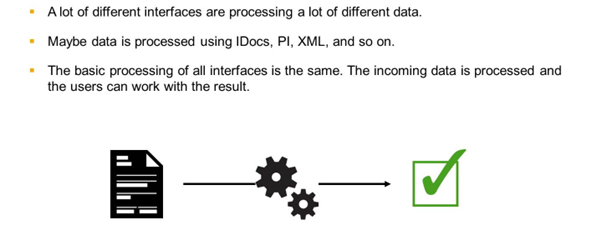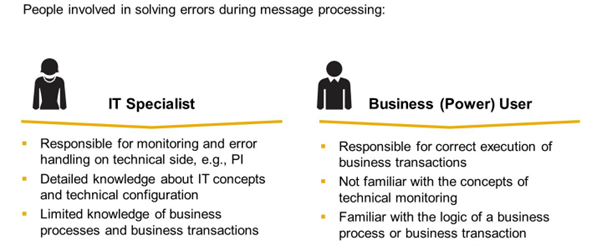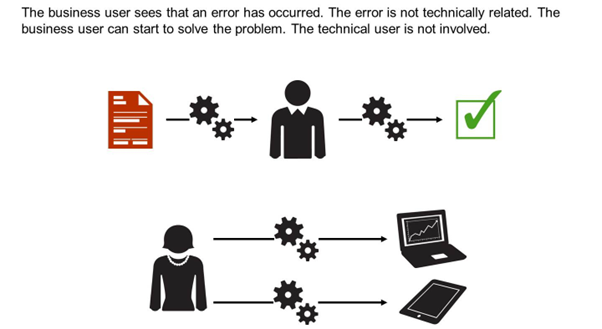Error Handling with and Without AIF
Introduction to SAP Application Interface Framework

The basic idea of interfaces is the automatic posting of data that was created from another system. The steps for this are always the same. You need the possibility to bring data inside of the system (IDoc, File,…) . Then a document is created in the system ( for example a sales order ) and then people can work with this document.
Of course, sometimes the process does not work as desired and an error occurs. As the sender of the interface trusts in getting for example the ordered items you always have to repair such errors. Different error types will need different people in the company to be solved.

Errors in interfaces are often handled by IT staff. Since typical error situations are often business-related, why not have the business (power) user enabled to do monitoring and error handling? This would clarify responsibilities and eliminate unnecessary communication overhead. It would lead to an overall faster issue resolving process, higher data quality, and a reduced interface TCO.
This is where the SAP Application Interface Framework (AIF) can support you. With AIF, business users are able to do the monitoring for the business-related errors of interfaces.
Typical Error Situation

During the processing of an interface, different errors can occur.
Here are some examples of errors that can occur:
- Low quality of data received.
- Typos at initial data creation.
- Invalid identification information (e.g., credit card number or IBAN).
- Missing information (e.g., address data).
- Format conversion errors:
- Unexpected date format: MM/DD/YYYY vs. DD.MM.YYYY
- Unexpected floating point separator: 100.00 vs. 100,00
- Unexpected indication of negative numbers: (100) vs. -100 vs. 100
- Missing mapping information:
- Customer master record for a given customer number not available-
- Missing entries in value mappings
- Technical issues:-
- Data record inaccessible (locked, moved, removed)-
- Out of system memory
It is necessary to solve these errors but who is responsible and what is the best way to solve them?

An error occurs during the processing of an interface.
There are two possible kinds of errors:
- Technical errors and
- Business errors.
When technical users monitor queues and see erroneous messages, they can try to solve the problem.
In the best case scenario, the error is an technical error. A technical user can solve the problem and restart the processing.
In the worst case scenario, a technical user ignores the error and waits for it to solve itself, e.g., when the data is resent automatically every week.

An error occurs during the processing of an interface.
A technical user sees the erroneous message. The root cause is a business error. The technical user has to find the business user responsible. If he does not know the business user responsible (maybe the error occurs irregularly), he has to search for the business user who can help him to solve the error. Depending on the interface's complexity, the departments involved, and the technical user's business knowledge, this can be a long and cumbersome process. Several people and a lot of communication overhead can be involved before the error can be resolved. This can cost a lot of time and money.

An error occurs during the processing of an interface.